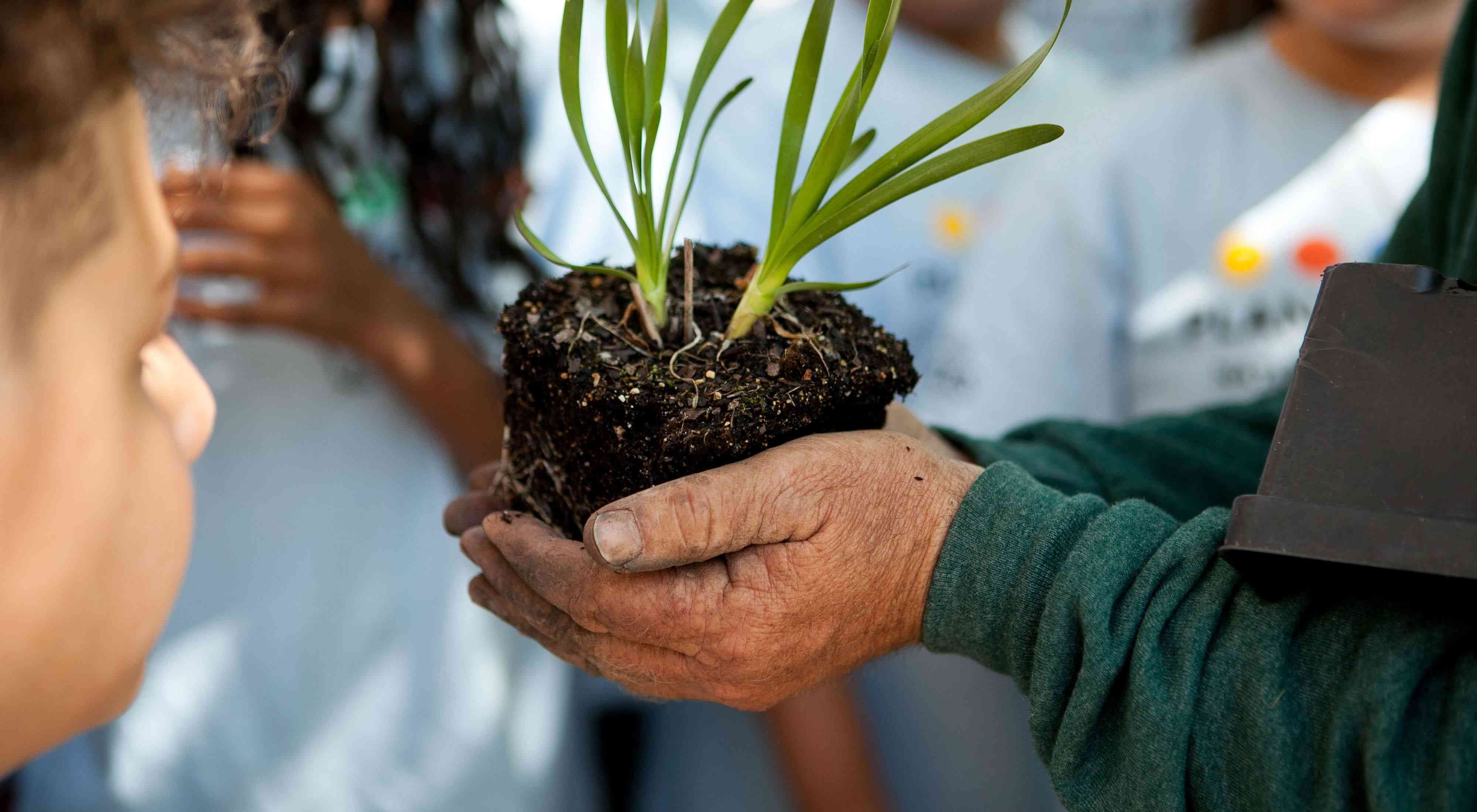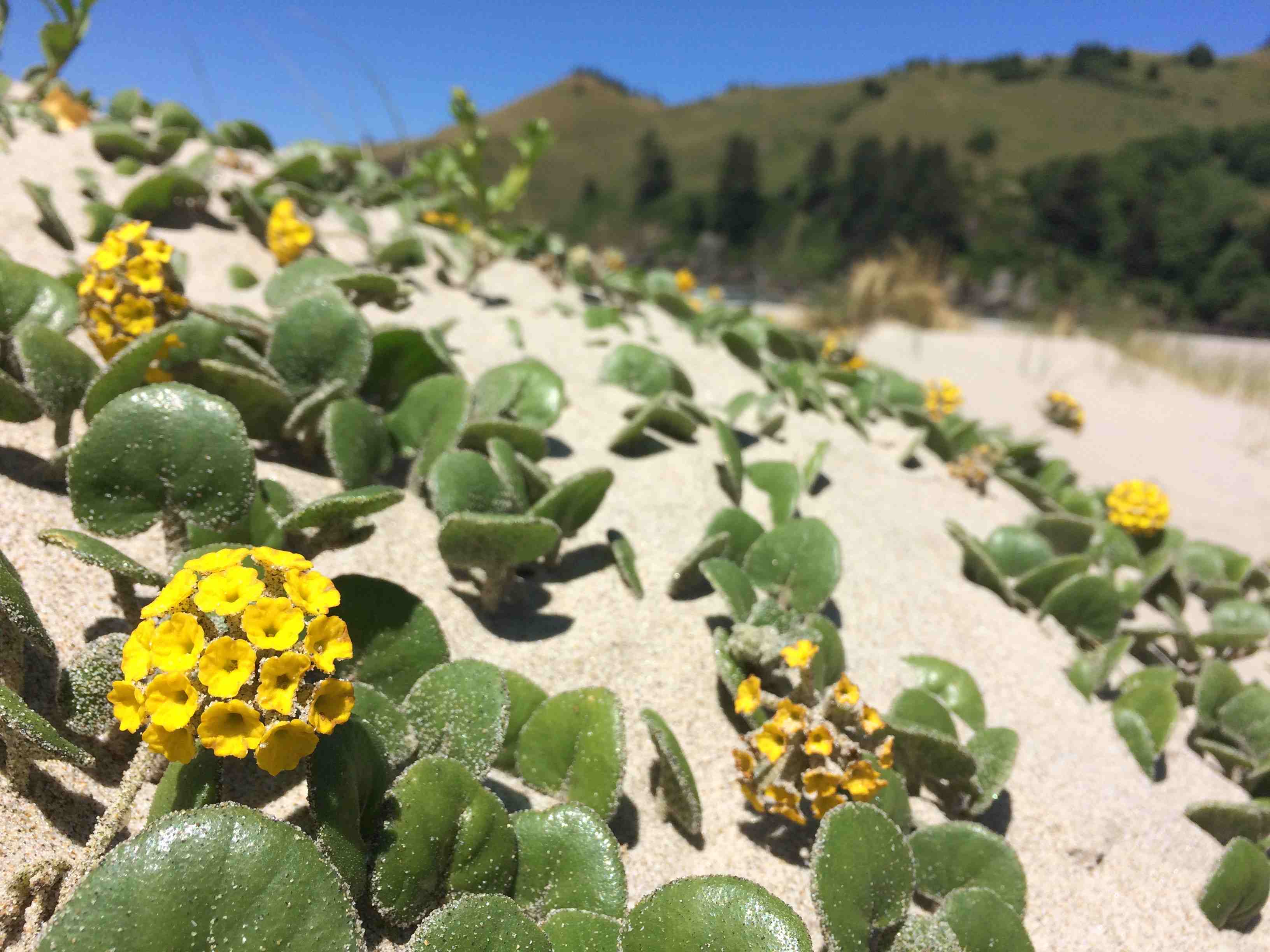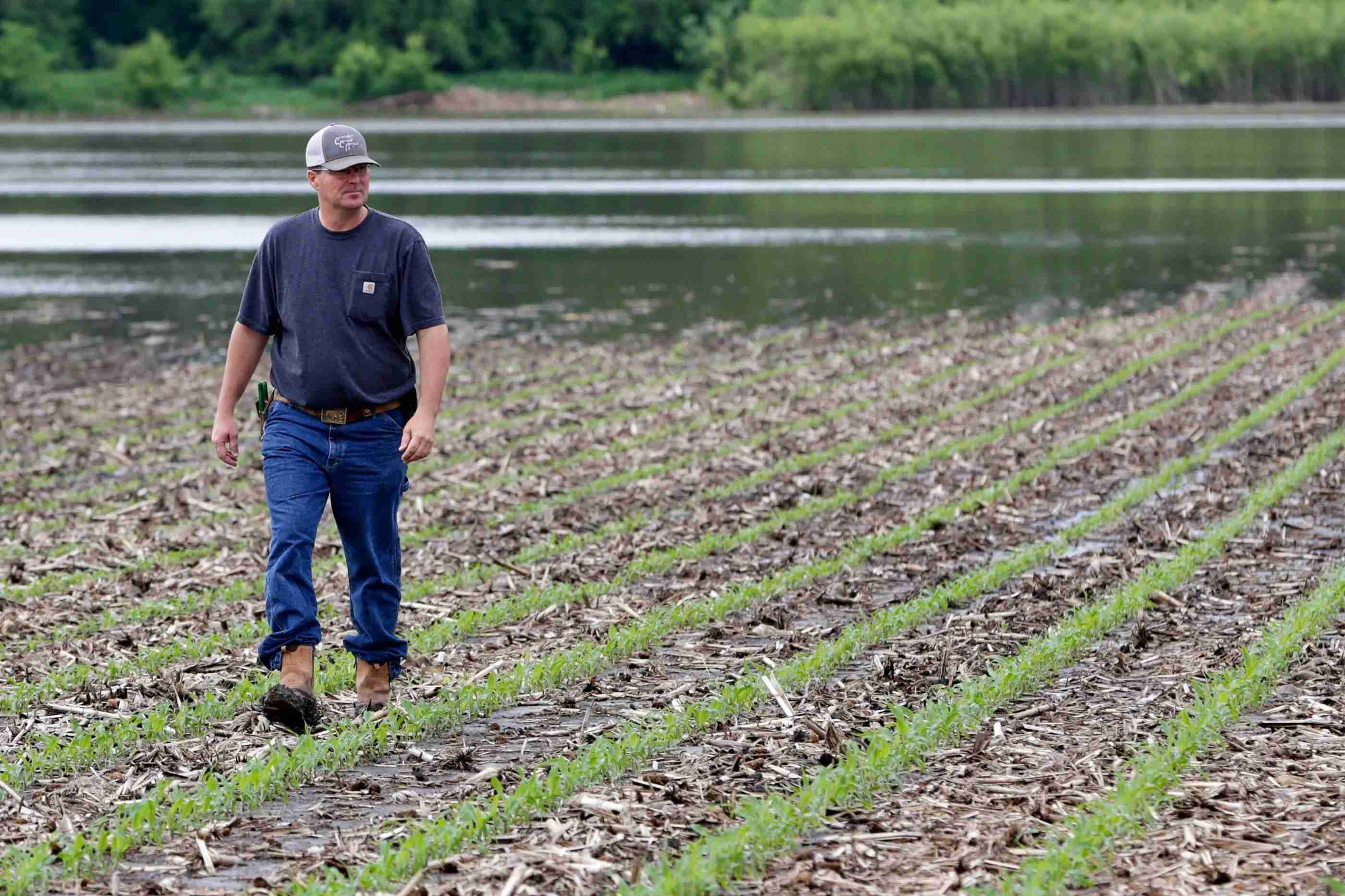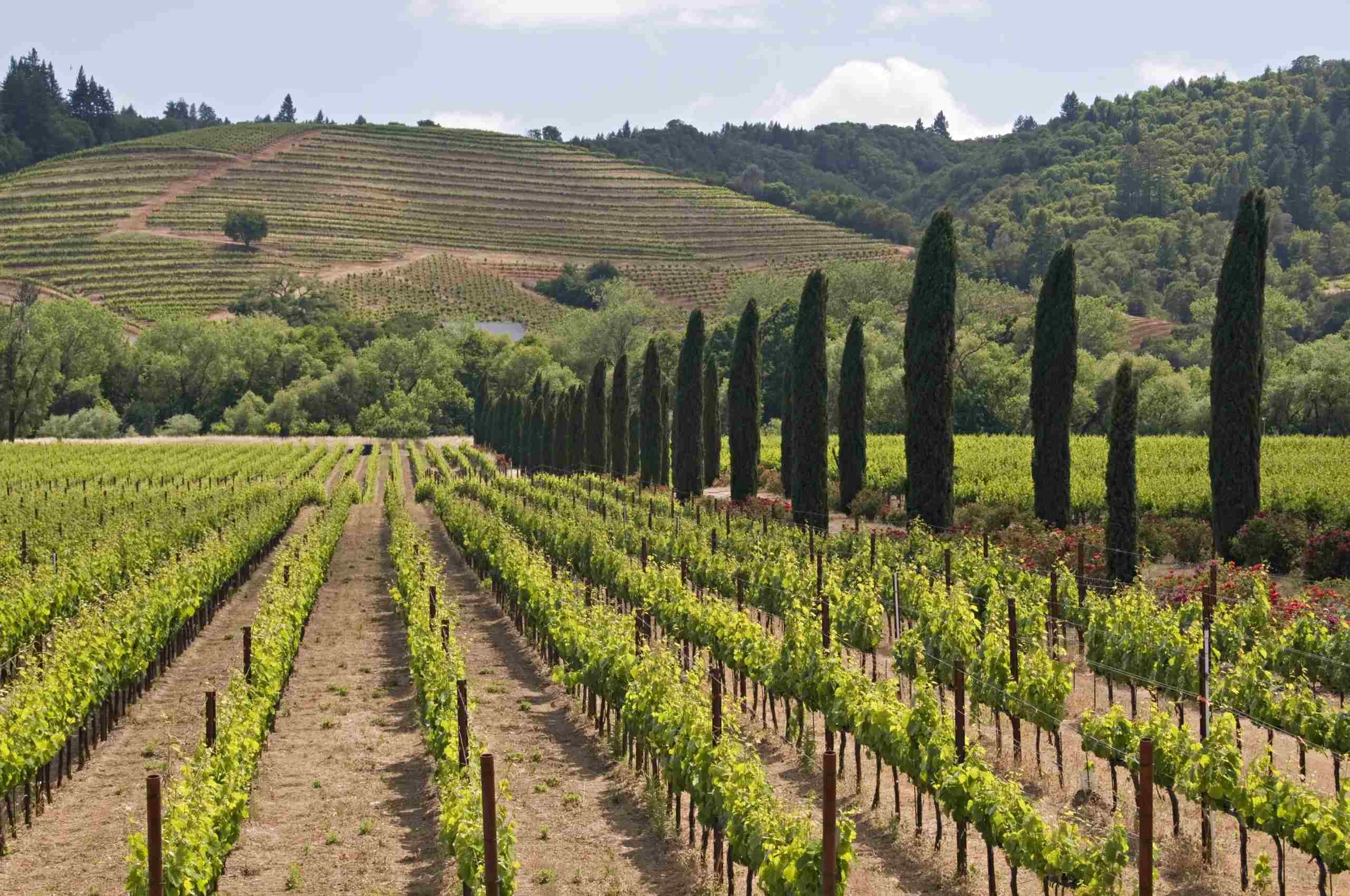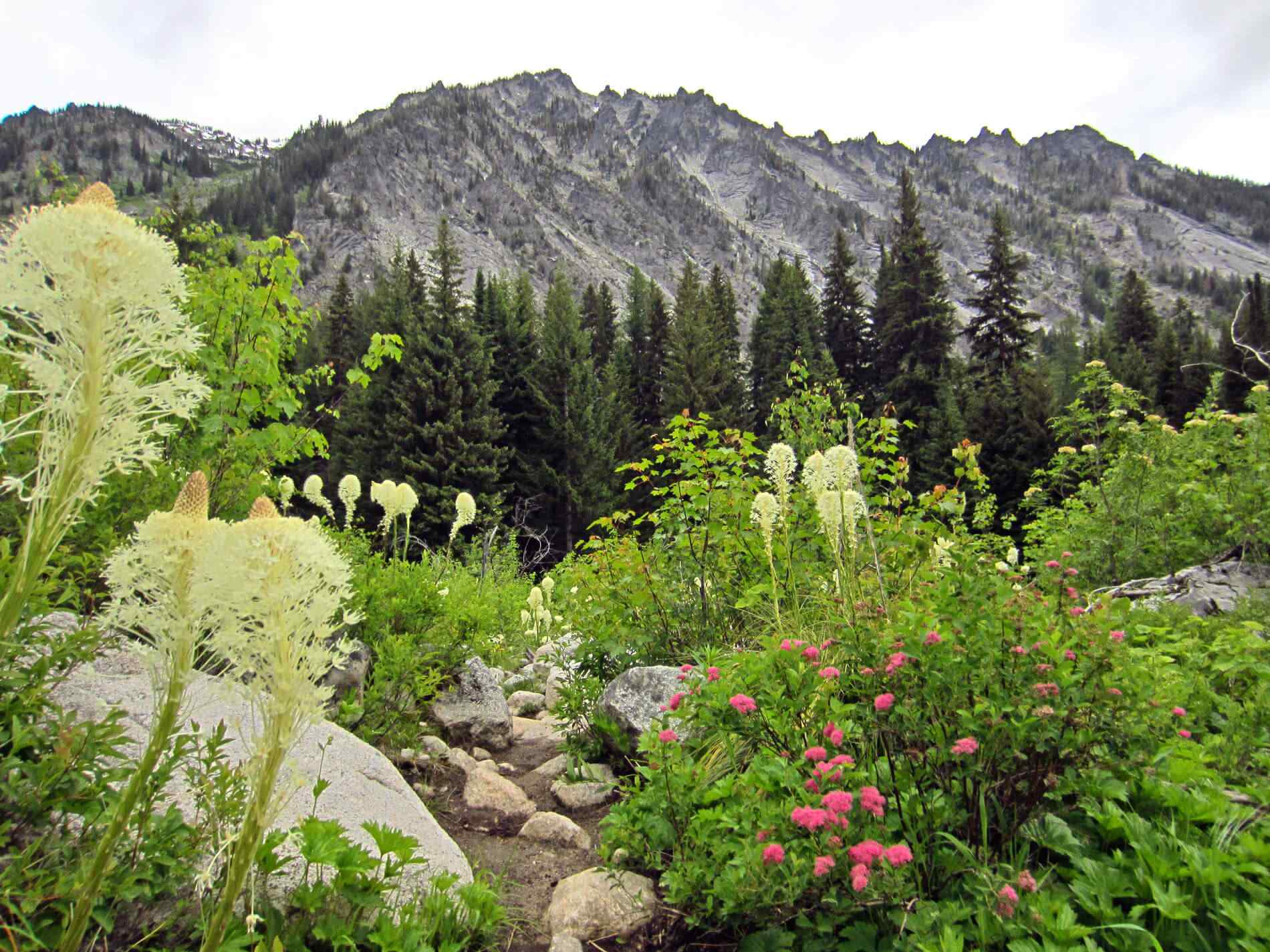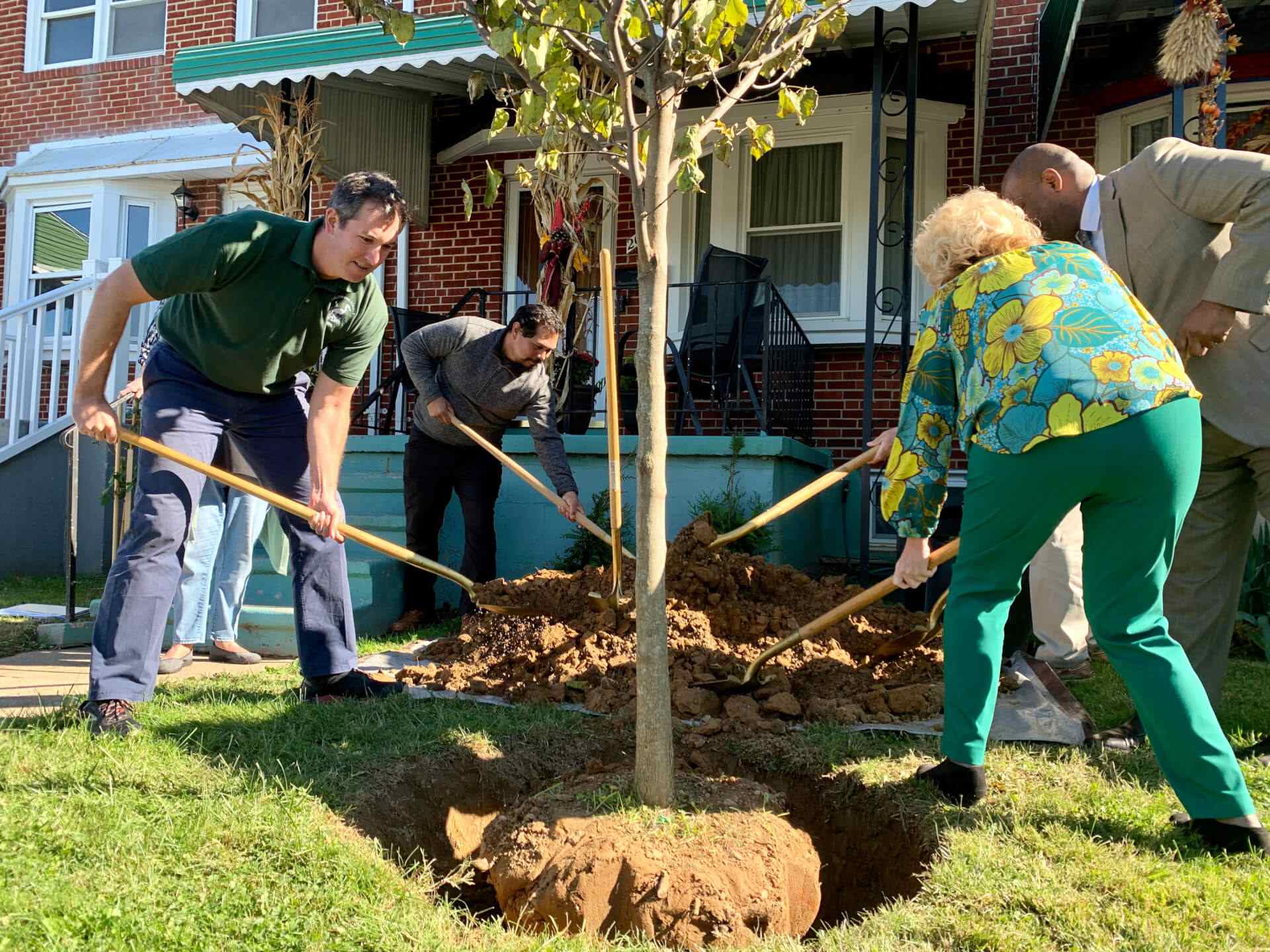Home>Gardening Basics>Understanding Soil>What Planting Zone Is Colorado Springs
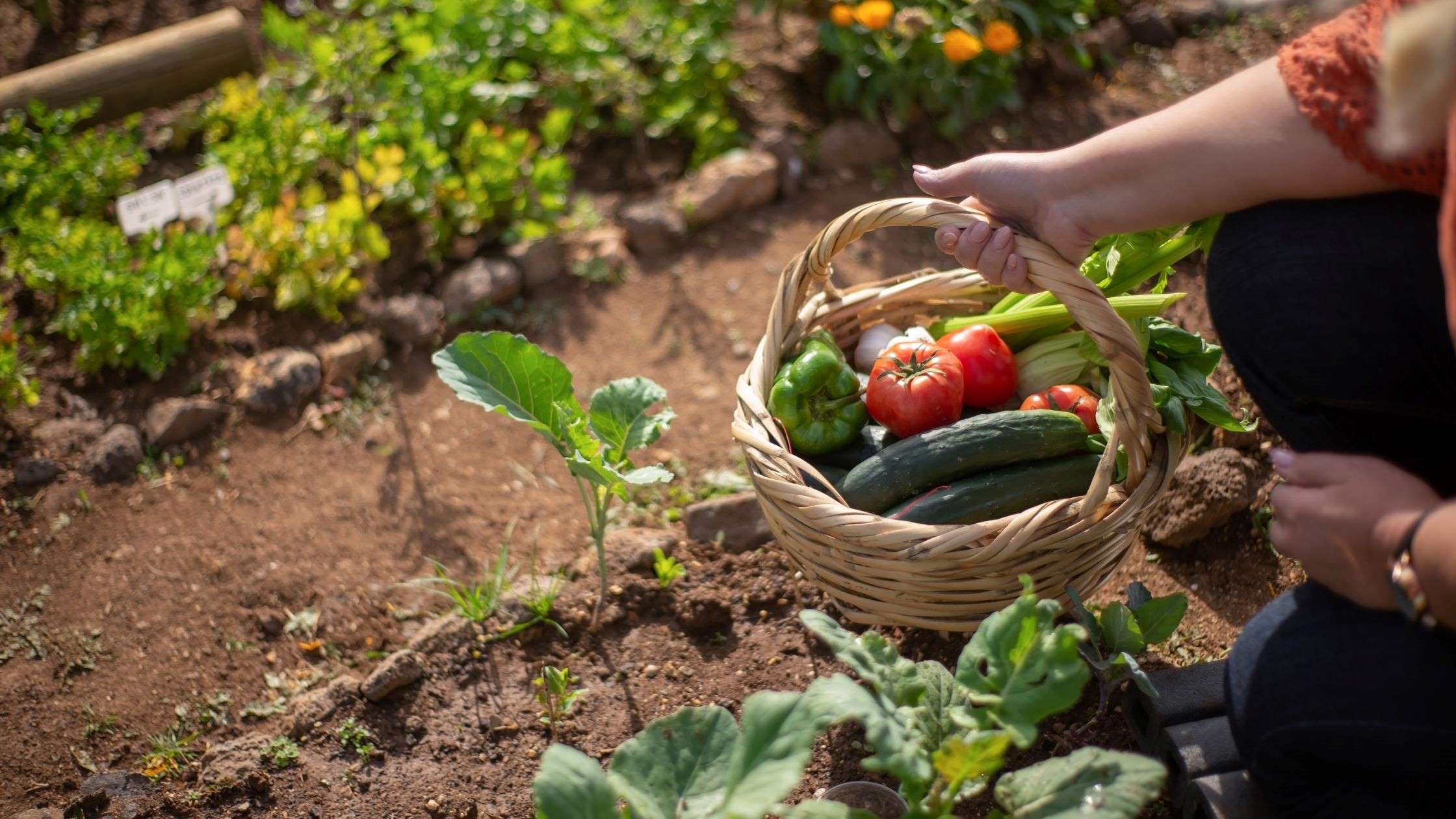

Understanding Soil
What Planting Zone Is Colorado Springs
Modified: January 22, 2024
Find out the planting zone for Colorado Springs and understand the importance of soil. Enhance your gardening knowledge with valuable insights on understanding soil
(Many of the links in this article redirect to a specific reviewed product. Your purchase of these products through affiliate links helps to generate commission for Chicagolandgardening.com, at no extra cost. Learn more)
Table of Contents
Introduction
Welcome to Colorado Springs, a city nestled in the magnificent Rocky Mountains in Colorado. If you’re an avid gardener or someone who enjoys landscaping, understanding the planting zone of your area is crucial for successful gardening. Planting zones provide valuable information about the climate, temperature, and growing conditions specific to your region.
Colorado Springs, with its unique climate and geography, has its own specific planting zone. By understanding this zone, you can choose plants that are well-suited to thrive in your garden or landscape. Whether you are a seasoned gardener or just starting out, this article will provide you with comprehensive knowledge about the planting zone in Colorado Springs.
Knowing your planting zone is like having a roadmap for your gardening endeavors. It helps you choose the right plants, plan your garden layout, and make informed decisions about watering, fertilizing, and maintaining your plants. Let’s explore the factors that determine the planting zone in Colorado Springs and how they impact the plant life in the area.
Understanding Planting Zones
Planting zones, also known as hardiness zones, are geographical areas that are defined by specific climate conditions and temperature ranges. These zones are used as a reference point for gardeners and horticulturists to determine which plants are most likely to thrive in a particular region.
The United States Department of Agriculture (USDA) has developed a Plant Hardiness Zone Map, which divides the country into different planting zones based on the average minimum winter temperatures of each area. This map is widely used by gardeners and professionals alike to determine the suitability of plants for a specific location.
Each planting zone is assigned a numerical value, with Zone 1 being the coldest and Zone 13 being the hottest. This classification helps gardeners understand the climate conditions and select plants that can withstand the minimum winter temperatures of their zone.
However, it’s important to note that planting zones are just one factor to consider when choosing plants. Other factors, such as soil type, sunlight exposure, and rainfall patterns, also play a crucial role in a plant’s success.
Understanding the planting zone of your area is essential because it provides valuable information about the potential challenges and advantages of gardening in that particular region. It allows you to select plants that are well-adapted to the local climate, ensuring they have the best chances of survival and growth.
Furthermore, planting zones can help you determine the appropriate time to plant certain crops and flowers. By considering the average frost dates for your zone, you can plan your gardening activities more effectively and ensure that your plants have sufficient time to mature and produce the desired results.
It’s important to keep in mind that planting zones are not static and can shift over time due to climate change and other environmental factors. Therefore, it’s always a good idea to stay updated with the most recent planting zone information for your area.
Climate and Geography of Colorado Springs
Colorado Springs, located in the beautiful state of Colorado, is known for its unique climate and stunning geography. Understanding the climate and geography of Colorado Springs is key to determining its planting zone and the types of plants that thrive in the area.
Colorado Springs experiences a semi-arid climate, characterized by relatively mild winters and warm summers. The city sits at an elevation of approximately 6,035 feet, surrounded by the majestic Rocky Mountains. The high elevation and mountainous terrain greatly influence the local climate, creating distinct seasonal variations and temperature fluctuations.
Winters in Colorado Springs can be cold, with average temperatures ranging from the 20s to 40s Fahrenheit. Snowfall is common in the winter months, and the city receives an average of 57 inches of snow annually. However, winter temperatures can fluctuate, with occasional periods of mild weather known as “Chinook winds” that can bring warmer temperatures and cause rapid snowmelt.
Summers in Colorado Springs are generally warm and pleasant, with average temperatures ranging from the 70s to low 80s Fahrenheit. The region experiences low humidity levels, which helps to create a comfortable and enjoyable summer climate. However, afternoon thunderstorms are common during the summer months, providing much-needed moisture and occasional hail.
The geography of Colorado Springs is diverse and breathtaking. The city is situated in the foothills of the Rocky Mountains, surrounded by stunning natural beauty. The rugged terrain, including canyons, hills, and valleys, adds to the charm and uniqueness of the area. The presence of the mountains creates microclimates within different parts of the city, resulting in variations in temperature, precipitation, and sunlight exposure.
The combination of Colorado Springs’ semi-arid climate and mountainous geography presents both opportunities and challenges for gardening and landscaping. The fluctuating temperatures, occasional frost, and limited precipitation require careful plant selection and appropriate irrigation practices.
Now that we have a better understanding of the climate and geography of Colorado Springs, let’s delve into the specific planting zone assigned to this region and its implications for gardening and landscaping.
Planting Zone for Colorado Springs
When it comes to determining the planting zone for Colorado Springs, it falls within USDA Hardiness Zone 5b. This zone is characterized by an average minimum winter temperature range of -15 to -10 degrees Fahrenheit. Understanding this planting zone is crucial for selecting plants that can thrive in the specific climate conditions of Colorado Springs.
Being in Zone 5b, Colorado Springs experiences cold winters and cool summers. This means that plants selected for the area should be able to withstand freezing temperatures and handle temperature fluctuations. Additionally, it’s important to consider the potential for frost events and occasional late spring or early fall freezes.
Choosing plants suited for USDA Zone 5b will help ensure their survival and optimal growth. Some popular plant options for this zone include cold-hardy perennials like coneflowers, daylilies, and black-eyed Susans. Trees such as Colorado blue spruce, aspen, and Rocky Mountain juniper also thrive in this area.
It’s worth noting that microclimates within Colorado Springs may exist due to varying elevation, sunlight exposure, and proximity to mountains. These microclimates can create slightly different growing conditions and may expand the range of plants that can be successfully cultivated in certain areas of the city.
When planning your garden or landscaping project, it’s important to account for the specific needs and characteristics of the plants you choose. Factors such as soil type, moisture requirements, and sunlight exposure should be considered to ensure the success of your plants.
By understanding the planting zone for Colorado Springs and selecting plants that are well-suited for this zone, you can create a beautiful and thriving garden that enhances your outdoor space and brings joy throughout the seasons.
Factors Affecting Planting Zones in Colorado Springs
Several factors influence the planting zones in Colorado Springs, shaping the unique gardening conditions of the area. Understanding these factors is essential for successful gardening and selecting the right plants for your landscape. Let’s explore some of the key factors that affect planting zones in Colorado Springs.
- Elevation: Colorado Springs’ elevation plays a significant role in determining the planting zones. Higher elevations generally experience cooler temperatures, shorter growing seasons, and more extreme weather conditions. As you move up the mountains, the planting zones may shift to colder zones with shorter growing periods, often limiting the types of plants that can thrive.
- Temperature: The average minimum winter temperature is a crucial factor in determining plant hardiness. Colorado Springs’ colder winter temperatures affect the range of plants that can survive and thrive in the area. Some plants may require protection or insulation during freezing temperatures.
- Microclimates: Within Colorado Springs, microclimates can exist due to variations in elevation, topography, and exposure to sunlight. Sheltered areas or south-facing slopes may experience slightly warmer temperatures, allowing for the cultivation of more tender plants. Understanding the microclimates in your specific location can expand the range of plants that can be successfully grown.
- Soil Composition: The soil composition of an area also affects the planting zones. Colorado Springs’ soils can vary, ranging from sandy and gravely soils to clay-rich soils. Understanding the soil composition in your garden or landscape is important for selecting plants that can thrive in those specific conditions.
- Precipitation: The amount and distribution of precipitation significantly impact the planting zones. Colorado Springs is considered semi-arid, with relatively low annual rainfall. This means that plants selected for the area should have some tolerance for drought conditions and require less water compared to plants suited for more humid climates.
When planning your garden or landscape in Colorado Springs, it is crucial to consider these factors. By understanding the unique environment and conditions of your specific location, you can choose plants that are best suited to thrive in the area. This knowledge will help ensure the success of your gardening endeavors and create a beautiful and sustainable outdoor space.
Common Plants for Colorado Springs
Colorado Springs’ unique climate and planting zone offer a range of plant options that are well-suited to thrive in the area. These plants are known for their resilience, adaptability to the colder winters, and ability to withstand the fluctuations in temperature. Here are some common plants that flourish in Colorado Springs:
- Coneflowers (Echinacea): Coneflowers are versatile perennials that add vibrant color to any garden. They are known for their long-lasting blooms, which attract butterflies and other pollinators. Coneflowers are hardy plants that can tolerate Colorado Springs’ winters and thrive in sunny areas with well-draining soil.
- Rocky Mountain Columbine (Aquilegia caerulea): The Rocky Mountain Columbine is the state flower of Colorado and a popular choice for gardens in Colorado Springs. It features stunning blue and white flowers that bloom in late spring and early summer. This perennial thrives in partial shade and well-drained soil.
- Blue Spruce (Picea pungens): The Colorado blue spruce is an iconic tree that adds beauty and evergreen color to landscapes. It is well-suited for Colorado Springs’ cooler temperatures and can tolerate various soil conditions. The blue-green foliage of this tree adds a touch of elegance to any garden or yard.
- Aspen Trees (Populus tremuloides): Aspen trees are symbolic of Colorado’s pristine mountain landscapes. They are known for their quivering leaves, which create a shimmering effect in the wind. Aspen trees thrive in Colorado Springs, bringing a touch of natural beauty to gardens and landscapes.
- Black-Eyed Susans (Rudbeckia hirta): Black-Eyed Susans are cheerful, daisy-like flowers that bloom throughout the summer. With their bright yellow petals and dark centers, they add a vibrant pop of color to gardens in Colorado Springs. They are drought-tolerant and thrive in full sun.
- Yarrow (Achillea millefolium): Yarrow is a hardy perennial that produces clusters of delicate, flat-topped flowers in an array of colors, including white, yellow, and pink. It is well-suited to Colorado Springs’ conditions, including its ability to withstand drought and poor soil quality. Yarrow attracts pollinators and is a great addition to any garden.
While these plants are well-suited for Colorado Springs, it’s essential to consider your specific location, microclimate, and soil conditions when selecting plants for your garden or landscape. Consulting with local nurseries or horticultural experts can provide additional guidance in choosing the right plants for your specific needs and preferences.
By incorporating these common plants into your garden, you can create a beautiful and sustainable landscape that thrives in Colorado Springs’ unique climate.
Tips for Successful Gardening in Colorado Springs
Gardening in Colorado Springs can be a rewarding experience, but it does come with its own set of challenges. By following these tips, you can increase your chances of success and create a thriving garden in this unique region:
- Choose plants suitable for Zone 5b: Select plants that are well-adapted to Colorado Springs’ planting zone, taking into consideration their tolerance for cold temperatures and ability to withstand temperature fluctuations.
- Pay attention to microclimates: Understand your specific location’s microclimate, as it can influence temperature, wind exposure, and sunlight. Choose plants accordingly, considering whether they thrive in sunnier or shadier conditions.
- Improve soil quality: Colorado Springs’ soils can be sandy or clay-like. Enhance the soil quality by adding organic matter such as compost or well-decomposed manure. This helps improve drainage, water retention, and nutrient availability.
- Water wisely: Water deeply and infrequently, allowing the soil to dry out between watering sessions. This promotes healthier root growth and helps plants become more resilient to drought conditions.
- Consider xeriscaping: Xeriscaping involves using plants that are drought-tolerant and requires less water. It is a sustainable and water-efficient approach to gardening, well-suited to Colorado Springs’ semi-arid climate.
- Select native and adapted plants: Opt for plants native to Colorado or those that are adapted to the region’s conditions. They are more likely to thrive and require less maintenance, as they are already well-suited to the local environment.
- Prepare for spring frosts: Late spring frosts can pose a risk to tender plants. Protect them by covering with frost blankets or bringing potted plants indoors overnight to prevent damage.
- Prune wisely: Prune trees and shrubs appropriately to remove dead or damaged branches. However, be cautious not to over-prune, as some plants may require their older growth for protection during winter months.
- Mulch your garden: Apply a layer of organic mulch around your plants to help regulate soil temperature, retain moisture, suppress weeds, and improve soil health.
- Stay informed: Stay updated on local gardening resources, workshops, and educational materials specific to Colorado Springs. Local experts and gardening organizations can provide valuable insights and advice to enhance your gardening knowledge and skills.
By implementing these tips, you can create a successful and sustainable garden in Colorado Springs, filled with beautiful and resilient plants that thrive in the unique climate of the region.
Conclusion
Gardening in Colorado Springs presents a wonderful opportunity to create a beautiful and thriving outdoor space that complements the unique climate and geography of the area. By understanding the planting zone, climate, and factors influencing gardening in the region, you can make informed decisions and cultivate a successful garden.
Colorado Springs, with its USDA Hardiness Zone 5b, experiences cold winters, cool summers, and limited precipitation. These conditions require careful plant selection and proper gardening techniques to ensure the health and vitality of your plants.
Choosing plants well-suited for Colorado Springs’ planting zone, such as coneflowers, aspen trees, and Rocky Mountain Columbine, can provide vibrant colors and natural beauty to your landscape. Additionally, considering microclimates, soil composition, and water-wise practices like xeriscaping can further enhance your gardening endeavors.
Remember to stay informed about local gardening resources, seek advice from gardening experts, and stay connected to the gardening community in Colorado Springs. Their knowledge and guidance will assist you in making the best choices for your garden and help you navigate the unique challenges associated with gardening in the area.
Embrace the opportunities and challenges that Colorado Springs’ climate presents. Through careful planning, wise plant selection, and diligent garden care, you can create a thriving garden that brings joy, beauty, and tranquility to your outdoor space.
So go ahead, immerse yourself in the wonders of gardening in Colorado Springs, and let nature’s beauty flourish in your backyard.

